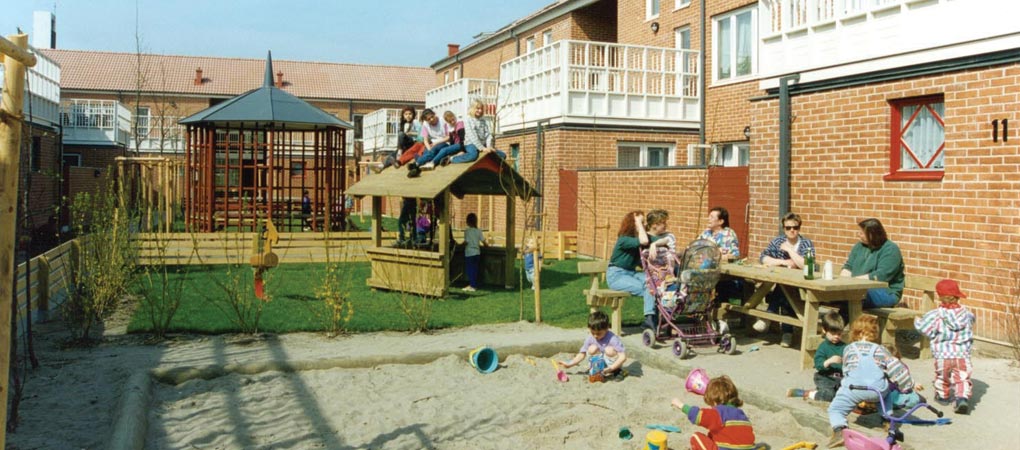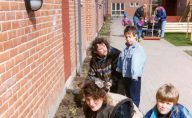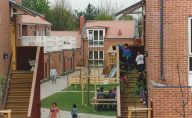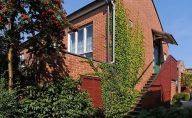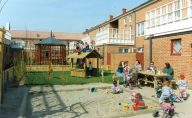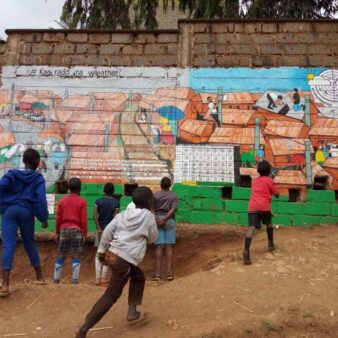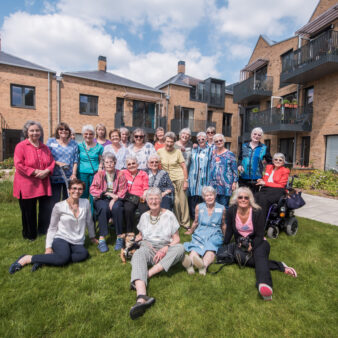This project was built as a result of winning an international design competition for low-cost housing with high social, ecological and architectural standards. Sixty-four dwellings in sixteen semi-detached houses plus a communal building have been built using a prefabricated wooden frame construction with clinker brick. Ecologically sound materials and a 40 per cent increase in the level of insulation, rainwater collection and a cogeneration system are included. Building costs were less than 30 per cent of normal costs for social housing and were met by the state. The communal building provides space for a day nursery, homework supervision, guest rooms and a communal kitchen with washing machine and dryer.
Originally established in the tenth century, Hannover is the capital and cultural centre of Lower Saxony. It has a population of 550,000 and is a commercial and communications centre of North-West Germany and is a world renowned centre for international trade fairs and the Expo 2000. The Europahaus Project is located in the growing town of Langenhagen, which is situated 10km from Hannover city centre and is the site of Hannover’s international airport.
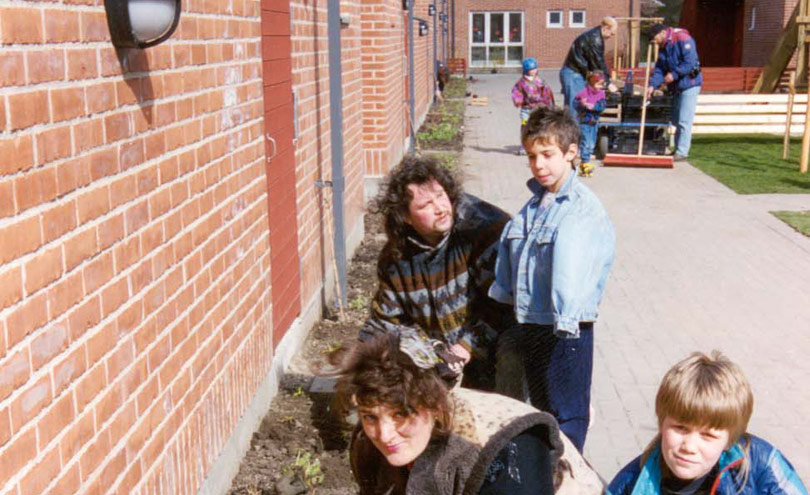
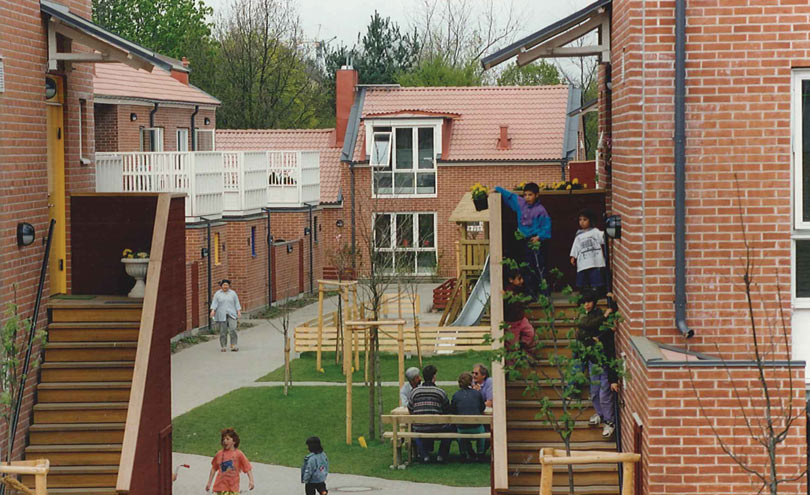
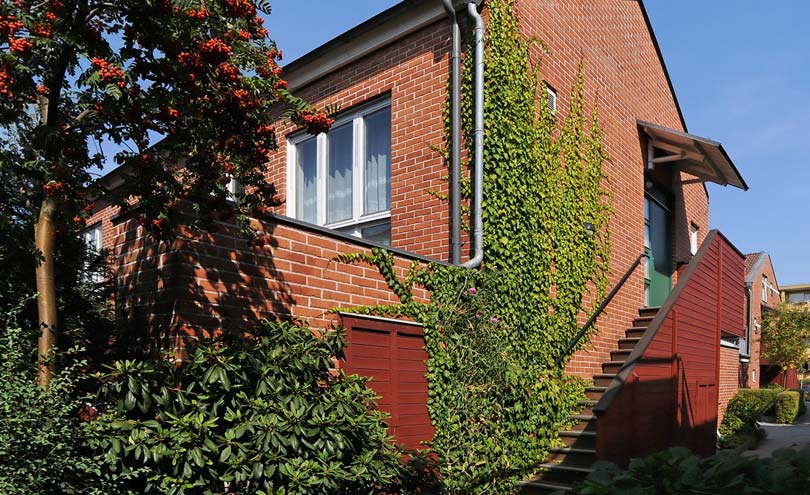
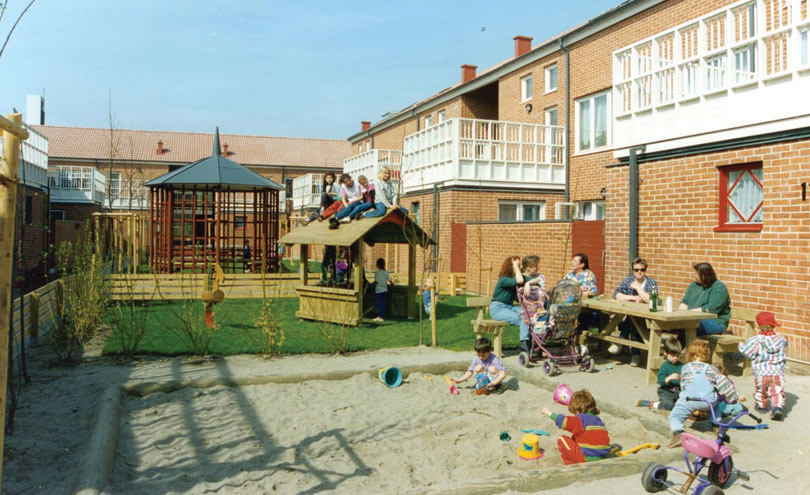
The Europahaus Project was built as a result of successful co-operation with the local building administration and research institutions and an international competition to design a cost-saving housing project to a high social, ecological and architectural standard for a specific site (7,000m2) in Langenhagen near Hannover. A fixed price was set for the project, in order to identify whether it was possible to achieve an increase in quality at the same time as a reduction in the typical cost of German social housing.
Building costs are much higher in Germany than in other European countries. Standards are also higher and there are more legal restrictions. The aim of the competition was to identify alternative high quality approaches to social housing provision at substantially lower cost than usual. The competition served to initiate a broad discussion within Germany on housing, urban development and the improvement of social, economic and ecological standards. Some flexibility was negotiated on the building code of Lower Saxony and the Langenhagen Municipality was very supportive with its un-bureaucratic and willing support and in its speedy creation of the necessary legal basis for the project.
Entries were judged according to their urban development, ground plan and cost-effectiveness. Standard German regulations relating to structural stability, fire protection and sound insulation were to be complied with. The winning entry of the Europahaus Project was from the Swedish consortium of Jacobson & Widmark/Nyréns/Mjöbäcks. Construction of the winning design was completed in December 1994 and the residents moved in early in 1995.
The Europahaus Project contains 64 flats arranged in sixteen two-storey buildings. Overlapping roofs connect the buildings together in groups of two, four or six. Prefabricated construction methods were used, using a timber frame with external brick cladding and tiled pitched roofs. All flats have individual entrances and have internal and external storerooms instead of the traditional basement cellars. Four different size flats are provided ranging from 58 m2 to 94 m2. A flexible floor plan is provided with windows and access to the garden/balcony on two sides, enabling multipurpose use of the rooms of the same size. A communal building with a floor area of 86 m2 is also provided. Cars are prohibited in the residential area and parking space is provided around the edge of the project.
High ecological standards have been achieved with a 40 per cent increase in the insulation levels compared to the German standard. The insulation material is made from recycled waste paper. A small co-generation plant is included in the project where two gas-operating car motors and turbines provide a central supply of energy and heating/hot water for the 64 dwellings. This unit brings down the carbon dioxide emissions to 40 per cent of normal. All materials used in the project are ecologically sound and provision is made for rainwater seepage as well as rainwater collection in rain barrels. Common areas are planted wherever possible, and include many trees (especially fruit trees). Ground floor tenants have small private gardens to the front and the back and those on the first floor have 12 m2 balconies with planting troughs on three sides. All planting and garden maintenance is carried out in co-operation with the residents.
The project was initiated by the Gundlach Housing Company, a family-owned private housing company with a reputation for innovation and experiment, which has been operating in the Hannover area for over 100 years. For twenty five years the company has had a client-oriented management approach to its social housing provision, relying on market research and social auditing to ensure that it remains in close touch with its tenants. Tenants are seen as customers, whose wishes are met by strengthening self-help and co-operation. Good co-operation and close links are considered crucial to good management and a small decentralised staff of 35 persons, including 4 social workers, manage 4,500 dwellings, 80 per cent of which are for low-income households. It is experimenting with various economic, technical, social, cultural and ecological innovations and has developed 35 projects in Hannover to identify innovative approaches to social housing provision. These include co-housing, tenants’ self-help, participation and good neighbourhood in the city projects.
The total building cost of the Europahaus Project was DM 13,700,000 including land and taxes ($8,430,768 or $131,730 per dwelling) and this represents a reduction of one quarter on the standard German building cost for such dwellings. Twenty-five per cent of the cost was met by the Gundlach Housing Company, 33 per cent was borrowed on a standard mortgage from the bank and the remaining 42 per cent was subsidy from the government (both state and local). Due to the lower building cost of the project the subsidy payments by the local authority and the rents of the tenants are also lower and Gundlach has fully covered its costs. All stakeholders benefit therefore from the reduced cost of the project. Maintenance and management costs are also lower than usual, due to very low rates of non-payment of rent and the complete lack of vandalism in the project. A Tenant Advisory Council has been established to support the management of the Gundlach Housing Company.
One of the main aims of the design brief was to encourage social integration and foster a community spirit among the residents. Since government housing subsidy was used, the local government has the right to determine who will live in the flats at a cheap and fixed rent for the next twenty-five years. Some of the poorest families in Langenhagen have moved into the flats (the homeless, unemployed, benefit recipients and refugees with up to 14 children) and are enjoying their new homes, gardens and the communal social life. Social interaction and community spirit have emerged and families from 13 nationalities live together in a supportive environment. Play areas for the children are positioned in such a way that families can supervise their own and other children from their own flats. The communal building is intensively used. A day nursery and homework supervision take place on a weekly basis. There is a communal kitchen with a washing machine and tumble drier. The building is also used for private family parties and for the various social events that are organised. The building is self-governed by the tenants, with the help of a resident who is employed part-time.
The Europahaus Project has triggered considerable debate amongst professionals and great interest has been shown in this pioneering approach to social housing provision. Local governments from all over Germany, housing companies, architects and building companies have already visited the project.
An identical project has already been built in the small town of Stadthagen near Hannover. The German government presented the Europahaus project within the Best Practices exhibition at the Habitat II meeting in Istanbul. The competitive procurement procedure for architects and builders, combined with a fixed price offer has been taken up by the City of Vienna for the building of 10,000 dwellings, where a comparable increase in quality and decrease in costs has been achieved as in the Europahaus Project.
Partnership
Academic/research, local government

